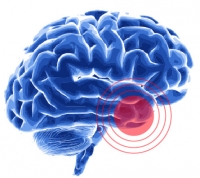Micronutrients Against Brain Tumors
A primary brain tumor is a highly aggressive type of tumor originating from brain tissues. Secondary brain tumors are the tumors that spread to the brain from cancers originating in other parts of the body (such as melanoma, the lungs, breasts, kidneys, and colon). The US estimates 23,380 adults will be diagnosed with primary brain tumors in 2014 and approximately 14,320 adults will die from those tumors. European statistics reported 57,132 cases of malignant brain tumors according to a 2012 statistical report.
There are several different types of primary brain tumors. However, 45% of all primary brain tumors are gliomas, which arise from a specific type of brain cells called glial cells.
When the tumor cells resemble the normal glial cells, glioma is a benign brain tumor. As the abnormal cells increase the aggressiveness of the cancer also increases. Glioblastoma multiforme is a highly malignant type of glioma. About 1 in 5 of all brain tumors are glioblastomas. While glioblastomas do not typically spread outside of the brain, they grow and spread very rapidly to the surrounding brain tissue. Glioblastoma symptoms vary depending on the pressure exerted on different areas of brain, and can cause headaches, nausea, seizures, and speech, vision, and personality problems. While it is not a cure, surgery is the usually the first step in the treatment plan for glioblastoma, followed by several rounds of radiation and chemotherapy.
Similar to most other tumors, brain and spinal cord tumors use the same mechanism to metastasize by destroying the surrounding connective tissue by means of two types of enzymes - matrix metalloproteinase (MMP) and urokinase plasminogen activators (uPA). Increased MMP and uPA levels are associated with the most aggressive brain tumors. While cancer cells secrete the collagen digesting MMP enzymes, the surrounding tissue secretes tissue inhibitors of metalloproteinases (TIMPs) as a protective mechanism.
Based on this, we studied the effect of a micronutrient combination (vitamin C, lysine, proline, green tea extract, and others) on the activity of MMPs, their tissue inhibitors (TIMPs) and the uPA using three different types of human glioblastoma cell lines*. Our results showed that the micronutrient combination initially reduced the secretion of MMP enzymes and, and at a higher dose, caused 100% blockage of the MMPs for all three glioblastoma cell lines. The micronutrient combination also inhibited secretion of uPA, at the same time increasing the secretion of the MMP inhibitors (the TIMPs).
With the current available options, conventional medicine only aims to improve the quality of life for patients with glioblastoma. Moreover, those options include only chemo and radiation therapy with the resulting harsh side effects and limited efficacy. In contrast, we have seen that the micronutrient combination effectively acts on various steps in cancer progression and block the aggressive spread of brain tumors providing hope for thousands of people.
Ref: MW Roomi et al., International Journal of Oncology 45: 887-894, 2014
